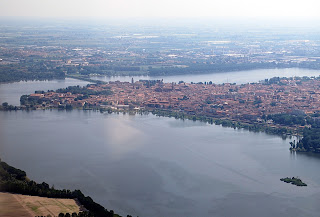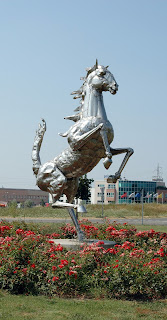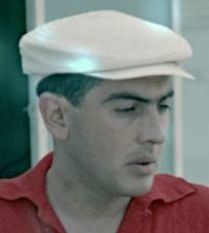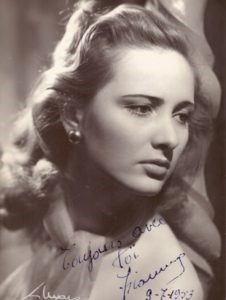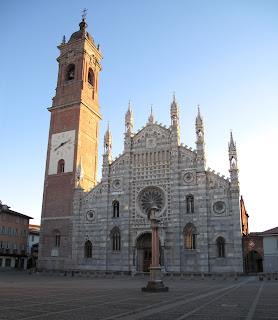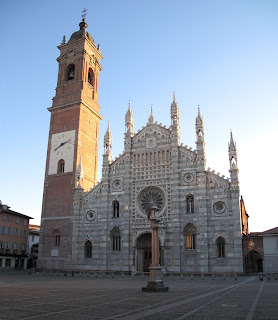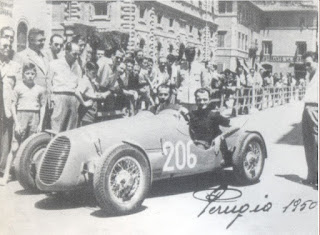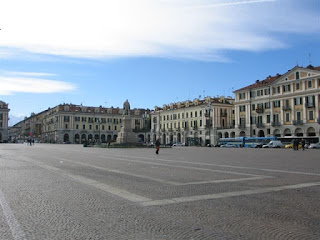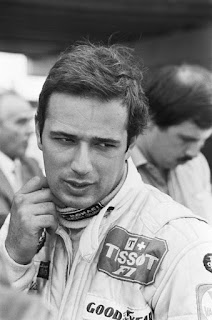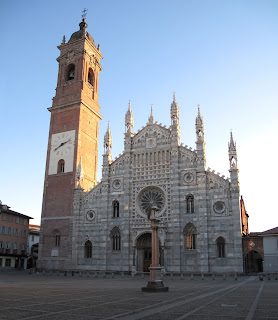Touring car specialist has won 10 titles
| Fabrizio Giovanardi has been racing for more than 30 years |
One of the most successful touring car racers in history,
the former Alfa Romeo and Vauxhaul driver Fabrizio Giovanardi, was born in
Sassuolo, not far from Modena, on this day in 1966.
Giovanardi has won the European Championship twice, the
European Cup twice, the British Championship twice, the Italian Championship
three times and the Spanish touring car title once.
His best season in the World Championship came in 2005, when
he finished third behind the British driver Andy Priaulx.
At the peak of his success, Giovanardi won a title each
season for six consecutive years.
Like many drivers across the motor racing spectrum,
Giovanardi had his first experience of competition in karting, winning Italian
and World titles in 125cc karts in 1986, before graduating to Formula Three and
Formula 3000.
He was hoping from there to step up to Formula One but
although he won a number of races the opportunity to drive competitively for an
F1 team did not come about.
It was during the 1991 season that he tried his luck in
touring cars and met with immediate success, winning five class S2 races in a
Peugeot 405, prompting him to focus on touring cars in the 1992 season. He
remained at class S2 level and won his first title, the Italian Superturismo
Championship, finishing first in 12 races for a commanding lead of 68 points
over British driver Gary Ayles.
 |
| The Vauxhall Vectra in which Giovanardi won the 2007 British Touring Car Championship |
He moved into the main class of the championship with
Peugeot in 1993, finishing in the top three overall twice before moving to
Nordauto Engineering Alfa Romeo in 1995.
In his début season with Alfa, Giovanardi again finished in
third. He continued in the Italian series in 1996 while simultaneously
contesting the four-race Campeonato de España de Turismo, which would give him
his second touring car title in 1997, when he was also runner-up in the Italian
series.
It began a run of six titles in as many seasons for the
Nordauto team, comprising consecutive Italian titles in 1998 and 1999, the
European Super Touring Cup in 2000, the European Super Touring Championship in
2001 and the European title in 2002.
Giovanardi’s career stalled when Alfa Romeo decided to pull
out of touring but he put himself back on track when he joined Vauxhall Racing
to compete in the British Touring Car Championship.
 |
| Giovanardi finished third in the 2005 World Championship in this Honda Accord |
He finished fifth in the 2006 season in an Astra before
finding that the new Vectra suited him very well, winning the 2007 title after
a season-long battle with SEAT Sport’s Jason Plato.
Giovanardi successfully defended his title in 2008 and
finished third in 2009, but suffered another blow when Vauxhall decided that
would be their last season in touring car racing, citing the economic downturn
for their withdrawal.
At 44 years old, Giovanardi had one more triumph, winning
the European Touring Car Cup for Hartmann Honda Racing, but after moving from
one team to another in search of the right car he effectively retired after the
2014 season.
His guest appearance at the Vallelunga round of the Italian
championship in September 2017, when he drove a SEAT León for BF Motorsport and
finished fourth, was his first competitive drive for three years.
Away from the track, Giovanardi is a keen pilot and has a
passion for renovating houses. He is
married with one son, Luca.
 |
| The Palazzo Ducale in Sassuolo |
Travel tip:
Sassuolo is a town in Emilia-Romagna, some 17km (11 miles)
southwest of Modena. With a population
of just over 40,000 Sassuolo is a major centre for the production of ceramics,
with more than 300 factories producing 80 per cent of all Italy’s ceramic
tiles, making it one of the most important ceramic centres in the world. At the centre of town, Piazza Garibaldi is a
pleasant square and the 17th-century Palazzo Ducale, designed by
Bartolomeo Avanzini, is a handsome building. Sassuolo’s football club made
history in 2013 when they were promoted to Serie A for the first time in their
93-year existence.
 |
| The Vallelunga racing circuit from the air |
Travel tip:
The Vallelunga motor racing circuit – the Autodromo
Vallelunga Piero Taruffi – can be found 32km (20 miles) north of Rome, close to
the town of Campagnano di Roma. Owned by the Automobile Club d’Italia (ACI),
the 4.1km (2.5 miles) track has held the Rome Grand Prix since 1963. The track is used by the FIA as a test circuit
for Formula One teams and has also hosted the Six Hours of Vallelunga endurance
event. In autumn of each year, Vallelunga
hosts a vast flea-market specialising mainly in vintage automotive spare parts.




